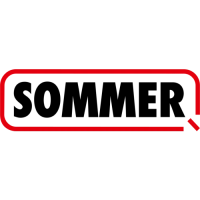42
13.1 Taking the control unit out
of operation and disassembly
Follow the basic safety instructions listed below.
Persons under the influence of drugs, alcohol, or
medications that can influence their ability to react may
not work on the control unit.
The disassembly and disposal of the operator may only
be performed by a qualified specialist.
This installation and operating manual must be read,
understood and complied with by the specialist who
disassembles the operator.
DANGER
Danger due to electric current!
Contact with live parts may result in electric
currentowingthroughthebody.Electric
shock, burns, or death may result.
► Before commissioning, it is essential to
ensurethatthespecicationsonthetype
plates of the operator and the control unit
match.
► Read and observe the safety information
and warnings on page 8.
The operator and its accessories must be disconnected
from electrical power when taking them out of operation
or during disassembly.
1. Turn off the control unit voltage supply.
Then check that the power is disconnected.
2. Disassembly is carried out in reverse order
of installation.
13.2 Storage
NOTE
Improper storage may damage the
operator.
Store the packaging units as follows:
• in enclosed, dry rooms so that they are protected
from moisture
• at a storage temperature from –25 °C to +65 °C
• secure to prevent falling
• leave room for unhindered passage
13. Taking out of operation, storage and disposal
13.3 Disposal of waste
Observe the instructions for disposal of packaging,
components, batteries and, if applicable, the accumulator.
DANGER
Danger of hazardous substances!
Improper storage, use or disposal of
accumulators, batteries and operator
components are dangerous for the
health of humans and animals. Serious
injury or death may result.
► Accumulators and batteries must be
stored out of the reach of children and
animals.
► Keep accumulators and batteries away
from chemical, mechanical and thermal
inuences.
► Do not recharge old accumulators and
batteries.
► Components of the operator as well as
old accumulators and batteries must not
be disposed of with household waste.
They must be disposed of properly.
NOTE
Dispose of all components in accordance
with national regulations to avoid environ-
mental damage.
INFORMATION
All components that have been taken
out of service must not be disposed of
with normal waste. Components which
have been taken out of service and
contain pollutants must be disposed of
correctly at an authorised recycling centre.
The local regulations must be observed.
INFORMATION
Old accumulators and batteries must not
be disposed of with household waste, as
they contain hazardous substances. They
must be disposed of properly at municipal
collection points or in the containers
provided by dealers. The local and national
regulations must be observed.

